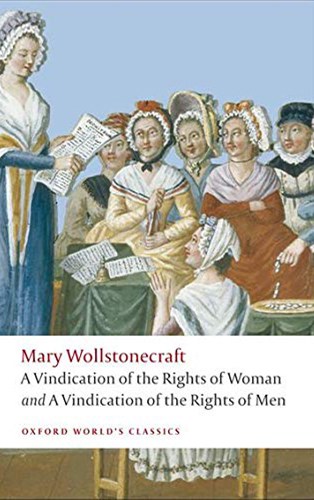Then Dinarzad cleared her throat and said, ‘Sister, if you are not sleepy, tell us one of your lovely little tales to while away the night, before I bid you good-bye at daybreak, for I don’t know what will happen to you tomorrow.’ Shahrazad turned to King Shahayar and said, ‘May I have your permission to tell a story?’ He replied, ‘Yes.’ And Shahrazad was very happy and said, ‘Listen’
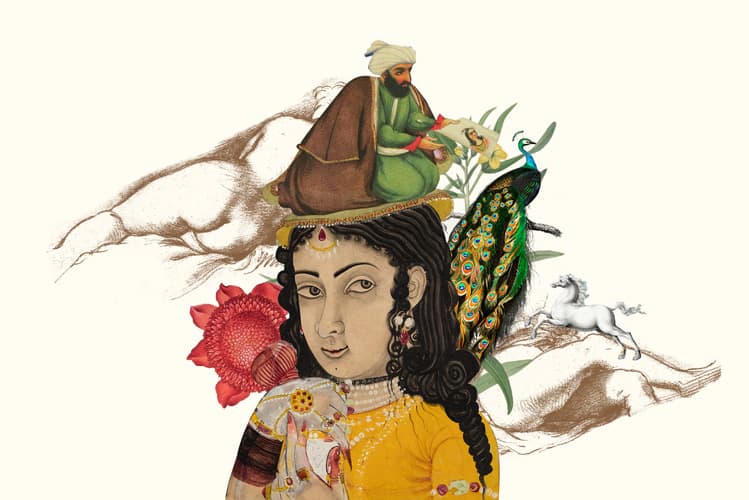
One Thousand & One Nights
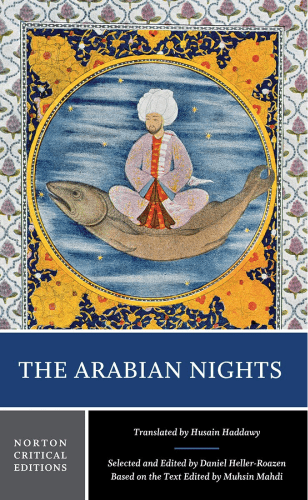
1,001 Arabian Nights. Suggesting a version or translation of the Nights is tricky both because of its length and number of translations. An accessible version is The Arabian Nights Norton Critical Edition, using the translation by Husain Haddawy. 978-0-393-92808-2. This edition does not include some well-known tales (“Ali Baba and the Forty Thieves,” “Aladdin and the Magic Lamp,” most notably), but it does include all seven of Sinbad’s voyages.
Project Gutenberg has Andrew Lang’s The Arabian Nights Entertainments
Richard F. Burton’s The Book of A Thousand Nights and a Night,
The "1,001 Arabian Nights" is a collection of stories, likely from various locales over a long period of time.
The oldest extant manuscript of these stories is Syrian and provided the basis for the first printed version of the stories, published in France by Antoine Galland between 1704 and 1718 in twelve volumes. Beyond that, the origins of the stories and reasons for their collection is unknown. A frame story connects the tales: a king finds his wife participating in an orgy, and he responds by flying into a murderous rage. He kills his wife and all of her slave girls, and then vows to take a woman each day for a wife, then kill her the next morning.
The King’s vizier has a daughter, Shahrazad, who is both beautiful and clever, known for her storytelling abilities. Shahrazad volunteers to marry the King, over the objections of her father. She has a plan. Every night, before sleep, she will begin telling the King a story but not finish it, promising to do so the following night. Thus, she keeps herself alive for 1,001 nights, after which the King (who has come to rely on her counsel and has fathered several children with her), decides to spare her life. Shahrazad’s stories span all genres of oral tales including fables, fairy tales, legends, parables, horror and romances.
Why This Text is Transformative?
Since almost all students have some familiarity with subgenres of folk literature, these stories are recognizable and accessible.
Tales from 1,001 Nights shed light on a different world for modern readers. Although highly fictionalized, even fantastic, the stories reflect social mores, political structures, family life, and daily occupations of another time and place, while simultaneously connecting to human concerns like the desires for happiness and justice, the presence of negative emotions like jealousy and anger, inequity and misunderstanding between genders, and the morality of those in power. Since almost all students have some familiarity with subgenres of folk literature, these stories are recognizable and accessible. They are also ideal for the classroom because they are (mostly) easy to extract and teach as free-standing pieces of literature. Further, students tend to find these stories interesting, funny, frustrating, entertaining, and even delightful.
A Focused Selection
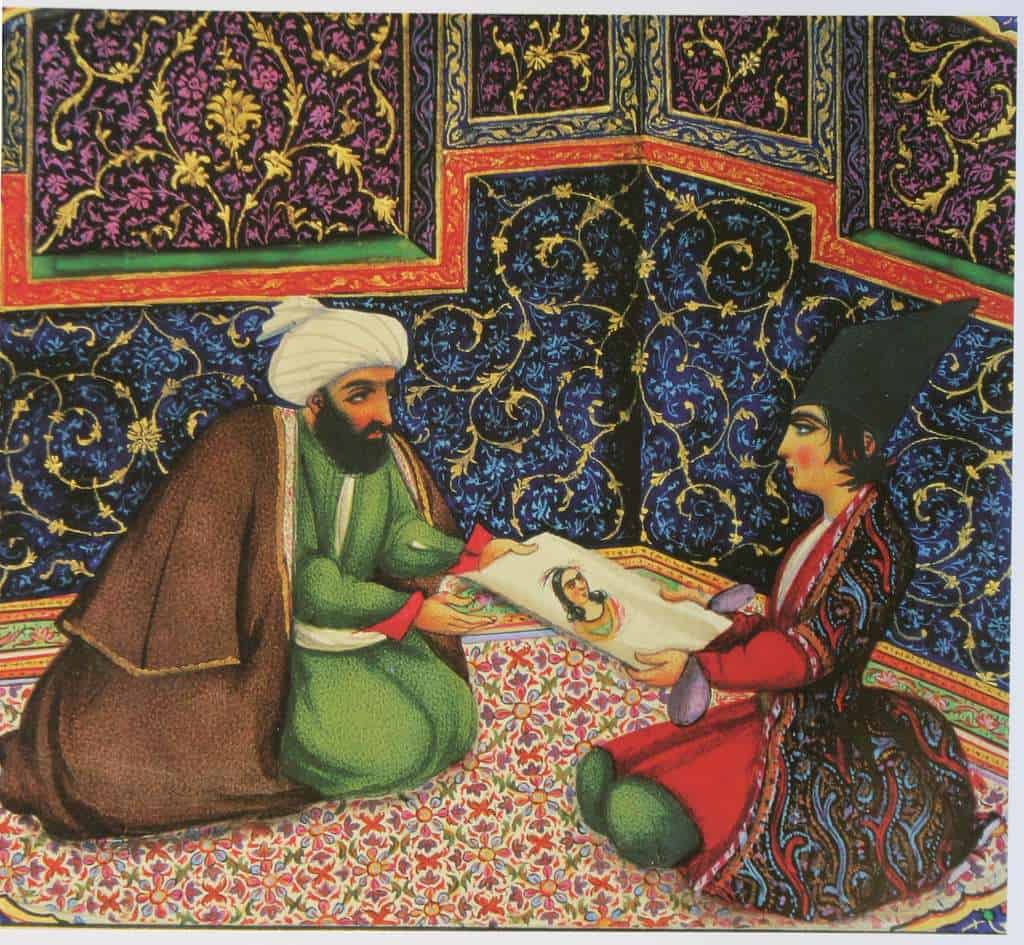
There are as many ways to select and introduce tales from 1,001 Nights as there are instructors to teach it, but a recommended selection might include:
The Story of King Shahrayar and Shahrazad
The Tale of the Ox and the Donkey
The Tale of the Merchant and his Wife
The Story of the Merchant and the Demon
The Story of the Fisherman and the Demon
The Story of the Porter and the Three Ladies
The Story of the Three Apples
The Story of the Hunchback
Study Questions
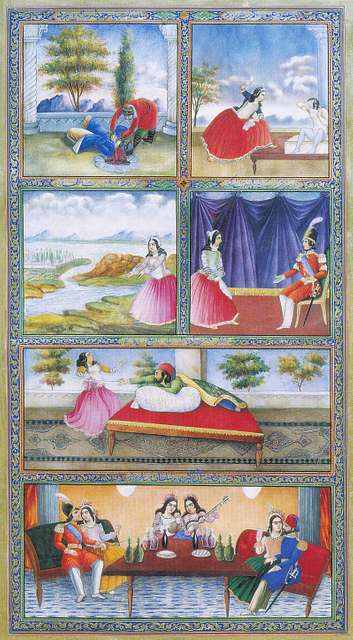
One Thousand and One Nights MS Volume 1 Watercolor on paper 18*32 cm Golestan Palace Museum, Tehran, MS no. 2240
1) Which of these stories appear to have didactic aims? What are the lessons that those stories seem to offer? Are there any stories that appear not to have a moral or morals? What are stories you were told as a child with a moral or lesson attached? How did those stories shape your beliefs and/or identity? Do you still embrace the lessons you were taught in those stories or have you come to believe otherwise?
2) What do these stories suggest about social structure or hierarchy? Do they challenge or reinforce these structures? In what ways do you relate to the messages about social status in the stories, and in what ways do they seem different or distanced from your experiences?
3) Consider the idea of justice in the Nights. What sort of justice is promoted in the tales? What sort of punishment? How are rulers called upon to administer justice? (These questions about justice come from “Teaching the Arabian Nights in Wisconsin” Prepared by Sofia Samata) How do these ideas about justice conflict or correspond with your own? Were you outraged or upset by any injustices in these stories? Why?
4) Shahrazad is clever, beautiful, brave, and a good storyteller, according to the text. What are some of the good qualities exhibited by other characters in these stories? What are some of the qualities of characters that seem to be deemed bad or undesirable in these stories? What qualities do you value in friends, authority figures, or romantic partners? What qualities do you value in yourself? Are your answers the same, regardless of who you are talking about? Or do you value qualities differently depending on the role of the person in question? Do you hold people to higher standards than you do yourself? Or hold yourself to higher standards?
Building Bridges
Students could really enjoy comparing both the frame stories and tales of 1,001 Nights and The Decameron. Many of the questions suggested above work for both texts, and considering them side-by-side might yield even more interesting answers. (A comparison of a short story collection like Monstress might as well!) For conversations about gender and power, A Vindication of the Rights of Women, The Color Purple, Beloved, The Story of an African Farm or To the Lighthouse might pair well.
Supplemental Resources
The In Our Time podcast brings together Melvyn Bragg, Sir Robert Irwin, Marina Warner, and Gerard van Gelder to discuss the tales. It’s an excellent 40 minutes of listening.
Marina Warner also gives an Edward Said Memorial Lecture called “Burning the Many-Coloured Fish: Re-readings in the 1,001 Nights,” which is challenging, but helpful in thinking through the problems of Orientalism and the text. “Teaching The Arabian Nights In Wisconsin,” linked above, has ideas for discussion questions, linked readings, and projects related to the text. Robert Irwin’s The Arabian Nights: A Companion and Marina Warner’s Stranger Magic: Charmed States and the Arabian Nights provide helpful context for instructors.
Text Mapping
Discipline Mapping
English/Composition Studies
Humanities
Political Science/Government
Page Contributor


